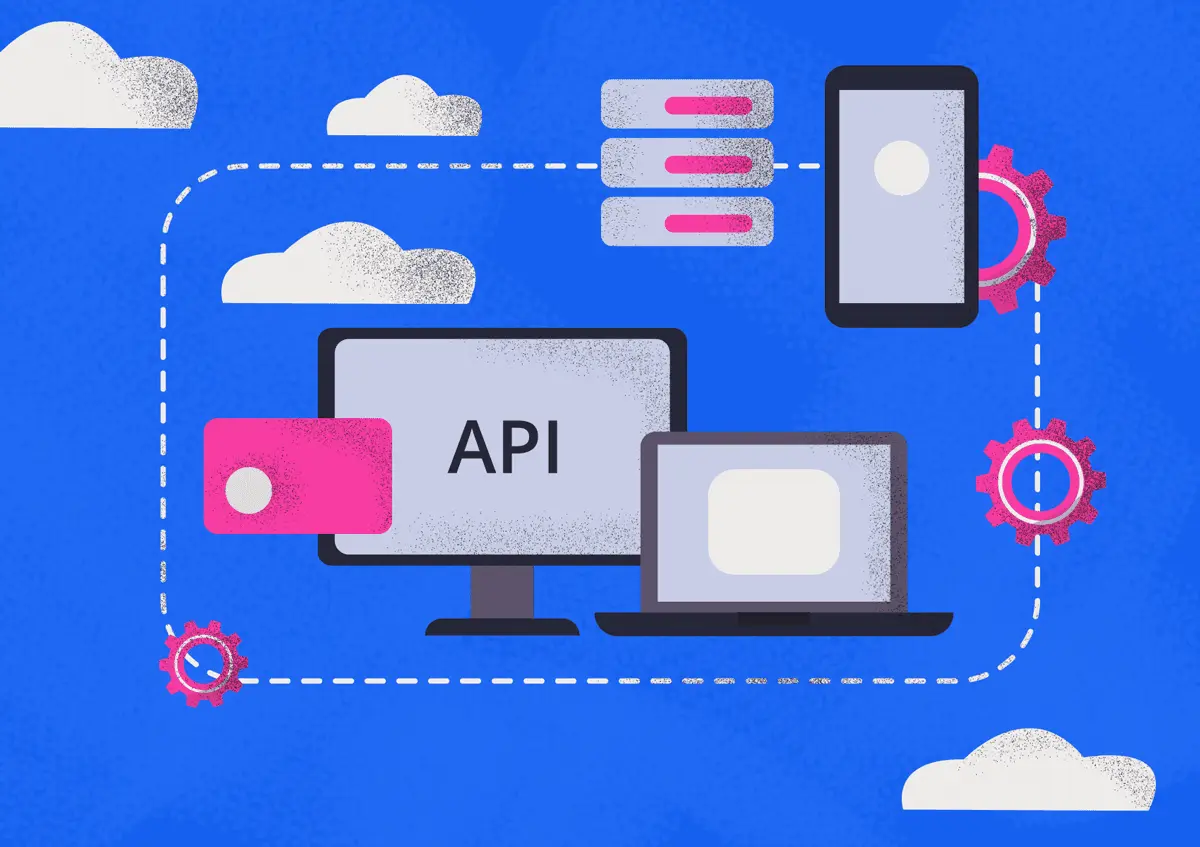API Integration in Modern Apps
Seamless digital experiences are no longer a luxury—they are an expectation. As technology evolves, users demand apps that work efficiently, provide personalized services, and effortlessly communicate with other systems. At the heart of this interconnected digital ecosystem lies API integration, a cornerstone of modern app development. 
Application Programming Interfaces (APIs) are no longer mere technical tools but have evolved into strategic assets that drive functionality, user engagement, and operational excellence.
Building Bridges: The Core Functionality of API Integration
APIs serve as intermediaries that enable different software systems to communicate. In today’s interconnected world, their role extends beyond facilitating data exchange; they actively shape how apps perform and interact.
APIs empower applications to integrate diverse services, databases, and platforms, making them interoperable. For example, payment gateways like Stripe and PayPal integrate seamlessly with e-commerce platforms, streamlining transactions for users.
Developers can leverage pre-built APIs to avoid building functionalities from scratch, saving time and reducing errors. This allows them to focus on refining the core value of the app.
APIs make it possible to add features and connect with new platforms without major overhauls, ensuring that apps remain flexible as user needs evolve.
Revolutionizing User Experiences with APIs
Modern users demand speed, convenience, and personalization—all of which API integration enables. A well-implemented API strategy ensures that apps provide a unified, efficient, and tailored experience.
APIs enable apps to access user data from various platforms, creating opportunities for hyper-personalized experiences. For example, social media APIs allow apps to pull user data for customized recommendations or experiences.
From tracking food deliveries to live stock prices, APIs facilitate the real-time exchange of information, keeping users engaged and informed.
By integrating APIs from multiple service providers, apps can offer bundled solutions. For instance, travel apps integrate APIs from airlines, hotels, and car rental services to create a one-stop solution for travelers.
Case Study: APIs and Smart Homes
Smart home ecosystems like Amazon Alexa or Google Home rely heavily on API integrations to control smart devices. By connecting APIs from lighting systems, thermostats, and entertainment devices, these platforms create a cohesive, intelligent home experience.
Streamlining Operations with API Integration
APIs not only enhance user-facing features but also revolutionize backend operations. Businesses that prioritize API integration in their app strategies see improvements in efficiency, agility, and collaboration.
APIs help apps connect to centralized data sources, ensuring consistency across platforms. This eliminates redundancies and reduces the risk of errors.
APIs enable automation across various processes, such as order management, inventory tracking, and customer relationship management, leading to faster and more accurate operations.
Businesses can create partner ecosystems through APIs, extending their value chain. For example, SaaS platforms often expose APIs to allow third-party developers to build extensions or plugins.
Overcoming Challenges
Despite their benefits, API integration can pose challenges, including compatibility issues, security risks, and the complexity of managing multiple API endpoints. Overcoming these hurdles requires:
Establishing clear policies and monitoring mechanisms for API use.
Employing authentication protocols like OAuth2 and ensuring encrypted data exchanges.
Managing API versions to ensure backward compatibility.
APIs as a Strategic Differentiator
API integration is not just about functionality—it’s about creating strategic advantages in a competitive market.
Apps that leverage APIs effectively are better positioned to innovate, adapt, and deliver value.
- Driving Innovation: APIs enable rapid experimentation by allowing developers to test and implement new features quickly. Open APIs also invite third-party developers to contribute innovative solutions.
- Expanding Market Reach: Through API integrations, apps can tap into new audiences and markets. For instance, integrating a popular social media API can exponentially increase visibility.
- Building Loyalty: Apps that integrate APIs to offer seamless, value-rich experiences are more likely to retain users. Consider how apps like Uber and Spotify use APIs to create superior, interconnected experiences that encourage long-term engagement.
The Future of API Integration
As artificial intelligence, machine learning, and the Internet of Things (IoT) gain prominence, APIs will play a pivotal role in shaping the apps of the future.
Emerging trends include:
- AI-Powered APIs: Enhancing app functionalities with intelligent features such as natural language processing and predictive analytics.
- API Standardization: Simplifying integrations with universal standards and protocols.
- Low-Code Platforms: Democratizing app development with platforms that offer pre-integrated APIs.
Conclusion
API integration has transformed modern apps from isolated tools into dynamic, interconnected platforms. Whether enhancing user experiences, streamlining operations, or driving innovation, APIs are the silent enablers of digital transformation.
For businesses and developers, understanding and leveraging API integration is no longer optional it’s imperative for staying competitive in an increasingly connected world.
As apps become more sophisticated, the role of APIs will only grow, ushering in an era where integration and innovation go hand in hand.
Sources
- What Are APIs and How Do They Work? (Postman)
- API Integration in Business (IBM)
- The Importance of API Strategy (Google Cloud)
- Benefits of API Integration (Mulesoft)
- How APIs Power App Innovation (Forrester)
- API Security Best Practices (OWASP)
- Building Smarter Apps with APIs (TechTarget)
- The Future of APIs (Gartner)
- Open APIs and Innovation (ProgrammableWeb)
- APIs in the IoT Era (ZDNet)


































